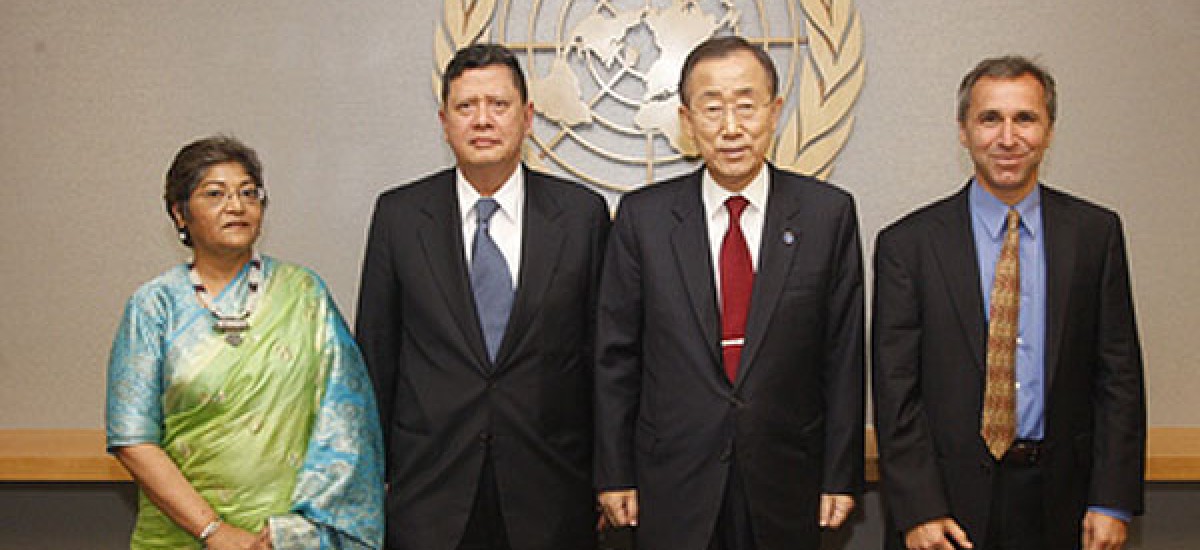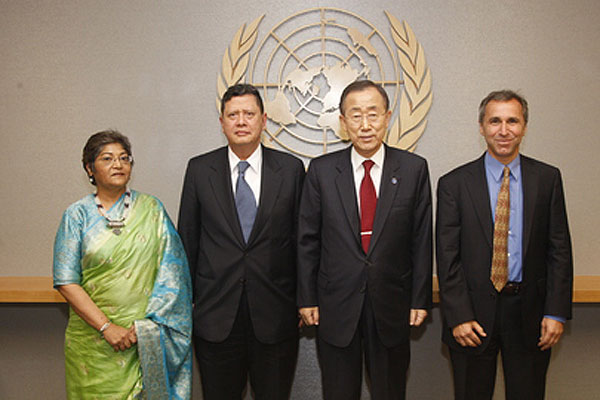The Island newspaper continues to publish leaks from the report produced by the Panel appointed by the UN Secretary General to look into allegations of war crimes in Sri Lanka. Groundviews flagged key points and placed in context what is widely acknowledged to be the executive summary of the report, published in The Island newspaper on Saturday. On the 17th and 19th of April, the newspaper published two more excerpts from the body text of the report. Going by the newspaper’s introduction to Part 1, we can expect much more content in the future, which begs the question as to why the UN itself hasn’t yet officially released the report into the public domain.
As with our first story, we provide context and background information to frame these highlights.
Part 1 deals with civilian casualty figures. Highlights include,
“There is no authoritative figure for civilian deaths or injuries in the Vanni in the final phases of the war. Several actors make it very difficult to calculate a reliable casualty figure: (a) the number of persons in the conflict area remains uncertain, although it was likely to have been as many as 330,000; (b) the lack of an accurate count of the number of persons who emerged from the Vanni, due to the lack of transparency in the screening process; (c) lack of certainty on the numbers of LTTE combatants, complicated further by the increase in forced recruitment in the final phase; and (d) the fact that many civilians were buried where they fell, without their deaths being registered, in some cases, unobserved.”
“The United Nations Country Team is one source of information; in a document that was never released publicly, it estimated a total figure of 7,721 killed and 18,479 injured from August 2008 up to 13 May 2009, after which it became too difficult to count.”
“The number calculated by the United Nations Country Team provides a starting point, but is likely to be too low, for several reasons. First, it only accounts for the casualties that were actually observed by the networks of observers who were operational in LTTE-controlled areas. Many casualties may not have been observed at all. Second, after the United Nations stopped counting on 13 May, the number of civilian casualties likely grew rapidly. Due to the intensity of the shelling, many civilians were left where they died and were never registered, brought to a hospital or even buried. This means that, in reality, the total numbers could easily be several times that of the United Nations figure.”
“It is worth noting that the United Nations raised casualty figures in private entreaties with the Government, but never publicized its specific estimates. Government officials strongly refuted the figures provided by the United Nations, stating that the numbers were fabricated and that this was not the business of the United Nations… Some have criticized the failure of the United Nations to present figures publicly as events were unfolding, citing it as excessively cautious in comparison with other conflict situations.”
“In the limited surveys that have been carried out in the aftermath of the conflict, the percentage of people reporting dead relatives is high. A number of credible sources have estimated that there could have been as many as 40,000 civilian deaths. Two years after the end of the war, there is still no reliable figure for civilian deaths, but multiple sources of information indicate that a range of up to 40,000 civilian deaths cannot be ruled out at this stage.”
Part 2 deals with the shelling of civilians by the Sri Lankan Army. Highlights include,
“From as early as 6 February 2009, the SLA continuously shelled within the area that become the second NFZ, from all directions, including land, air and sea. It is estimated that there were between 300,000 and 330,000 civilians in that small area. The SLA assault employed aerial bombardment, long-range artillery, howitzers and MBRLs as well as small mortars, RPGs and small arms fire, some of it fired from a close range.”
“At the time, the Defence Secretary stated: “We are taking casualties to prevent civilians getting hurt. This is a factor we are very concerned about. Otherwise we could have used so much artillery and just moved on. The Government announced on 25 February, and again on 27 April, that the SLA was no longer using heavy weapons in the second and third No Fire Zones. But what was happening on the ground indicated the opposite. Intensive artillery fire had been a core tactic in the SLA’s military campaign from the outset. As victory neared, this tactic was not abandoned, but rather its use was intensified, even though the LTTE was now immobilized and surrounded in an area of high civilian density.”
“Putumattalan hospital was severely overcrowded with hundreds of newly injured civilians. As the Government did not allow basic medical supplies into the Vanni, conditions in Putumattalan hospital were so poor that a large number of amputations were performed without anesthetic, using butcher knives rather than scalpels. Sanitary pads and cotton cloths were used as bandages, and intravenous drips were hung from the trees, with the severely-injured patients lying on the ground under them. In spite of the significant efforts of the few available doctors, many patients died due to lack of access to proper medical care, and scores of bodies were deposited in front of the hospital each day”
“On 9 February 2009, shells fell on Putumattalan hospital, killing at least 16 patients. The shells came from SLA bases in Chalai, but subsequently shells were also fired from SLA positions across the lagoon (even though the hospital was clearly visible to the SLA based there).”
“ON 25th March, an MBRL attack on Ambalavanpokkanai killed around 140 people, including many children. On 8 April 2009, a large group of women and children, who were queued up at a milk powder distribution line organized by the RDHS, were shelled at Ambalavanpokkanai. Some of the dead mothers still clutched cards which entitled them to milk powder for their children.”
“The ICRC’s ships were also the only means for delivering food, but the supplies they were allowed to bring by the Government were inadequate. As conditions in the NFZ became more desperate, on 17 March, a large crowd of IDPs surrounded an international ICRC staff member who came ashore, begging him to save their lives by taking them out of the Vanni. The LTTE forcibly dispersed the crowd.”


